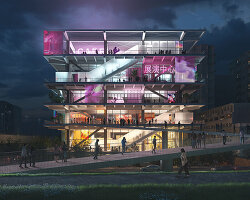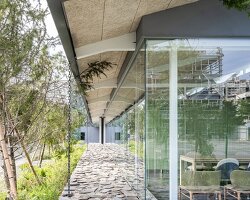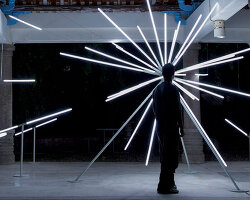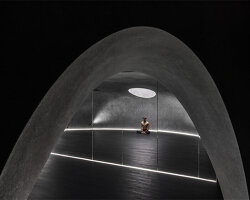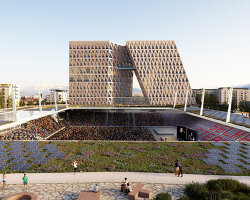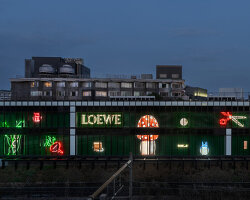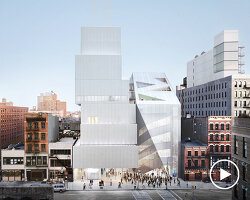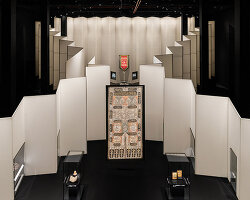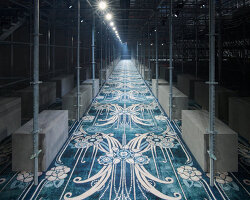
construction has begun on the OMA-designed taipei performing arts centre (TPAC) in taipei taiwan. the dutch practice won the competition to build the multi-theatre space in january 2009, beating out 135 other entries from 24 countries. see designboom’s coverage of the project during its proposal phase here.
the overall architecture of TPAC is composed of three main volumes, one 1,500-seat theatre and two 800-seat theatres, which plug into a central cube clad in corrugated glass. this consolidates the supporting backstage spaces and mechanical facilities of each auditorium into a single, efficient mass, while also letting the theatres function individually and autonomously. this arrangement allows the performing platforms to be modified or merged for unexpected scenarios and uses, offering specific advantages, as well as undefined freedoms.

taipei performing arts center – approach from north
image © OMA / artefactorylab (also main image)
the structure is lifted off the ground, the central block permitting the street to extend both under and upwards into the building, gradually separating the different auditoriums. this layout draws people into the ‘public loop’, an outdoor courtyard built within the infrastructure, whereby the general public, including those without a ticket, are also encouraged to enter TPAC and observe the areas of production that are typically hidden from view such as rehearsals, technical spaces. this gives the audience the opportunity to experience theatre production more fully, while also reaching out to the broader community.

arrival from underpass
image © OMA / artefactorylab

lobby perspective
image © OMA / artefactorylab

proscenium playhouse
image © OMA / artefactorylab
the main theatre, ‘proscenium playhouse’, resembles a suspended planet, docked within the central cube. the audience is able to circulate between an inner and outer shell to access the space. from within, the intersection of the internal framework and the cube forms a unique proscenium that creates any frame imaginable.

proscenium playhouse
image © OMA

grand theatre
image © OMA / artefactorylab
a contemporary evolution of the large performance spaces of the 20th century, the ‘grand theatre’ resists the standard shoebox-shape, taking on a slightly asymmetrical form. the stage level, parterre and balcony are all unified into a folded plane. the ‘multiform theatre’ stands opposite the ‘grand theatre’ on the same level and is a flexible space that accommodates the most experimental performances.
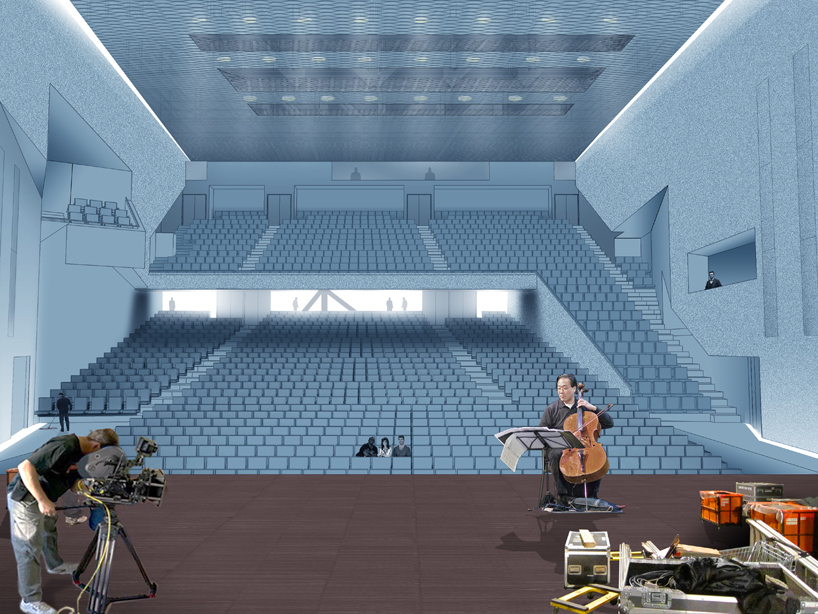
grand theatre perspective
image © OMA

multiform theatre
image © OMA / artefactorylab

super theatre
image © OMA / artefactorylab
the industrial-like volume of the ‘super theatre’ is formed by coupling the ‘grand theatre’ and ‘multiform theatre’. it has the capacity to accommodate previously impossible productions such as B.A. zimmermann’s opera ‘die soldaten’ (1958), which demands a 100-metre-long stage. existing conventional works can now be re-imagined on a more monumental scale, encouraging new practices of experimental theatre to flourish.
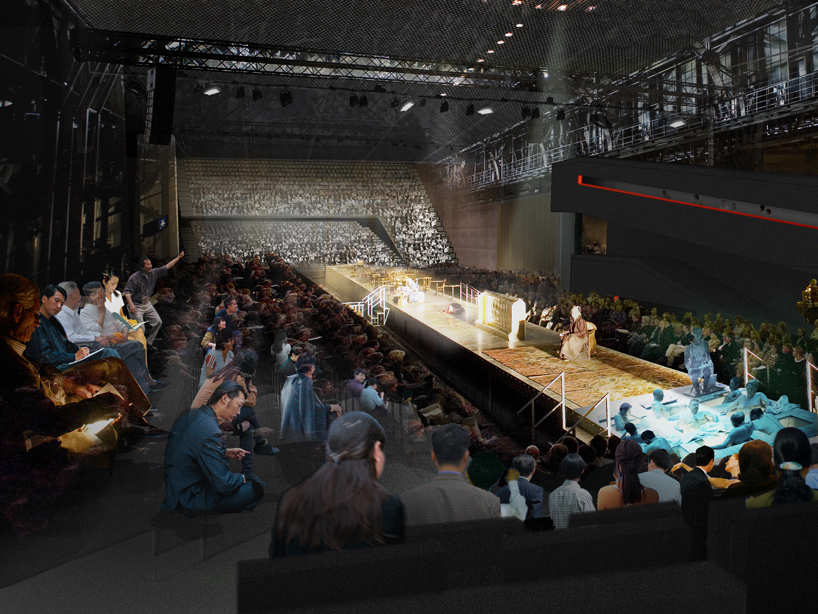
super theatre
image © OMA

outdoor public loop
image © OMA / artefactorylab

taipei performing arts center site by night
image © OMA / artefactorylab

site model
image © OMA / iwan baan

taipei performing arts center model
image © OMA

taipei performing arts center model 3/4 view
image © OMA

section of the ‘proscenium playhouse’
image © OMA

section of the ‘super theatre’
image © OMA

exploded diagram
image © OMA

diagram
image © OMA

diagram of public loop
image © OMA

lobby circulation diagram
image © OMA
animation explaining the design of the taipei performing arts centre
video courtesy of OMA
project info:
status: competition: 2008-2009. construction begins: 2012. scheduled completion: 2015
client: department of cultural affairs, taipei city government
budget: estimated: 5.4 billion taiwan dollars (around €140 million)
program: total 50,000m2. one 1,500-seat theatre and two 800-seat theatres
height: 63m
partners-in-charge: rem koolhaas, david gianotten
associate-in-charge: adam frampton
design team: ibrahim elhayawan with: yannis chan, hin-yeung cheung, jim dodson, inge goudsmit, alasdair graham,
vincent kersten, chiaju lin, vivien liu, kai sun luk, kevin mak, slobodan radoman, roberto requejo, saul smeding, elaine tsui,
viviano villarreal, casey wang, leonie wenz
competition team: partners / designers: rem koolhaas, david gianotten, ole scheeren, and senior architects: andré schmidt,
mariano sagasta and adam frampton, with: erik amir, josh beck, jean-baptiste bruderer, david brown, andrew bryant,
steven chen, dan cheong, ryan choe, antoine decourt, mitesh dixit, pingchuan fu, alexander giarlis, richard hollington,
shabnam hosseini, sean hoo, takuya hosokai, miguel huelga, nicola knop, chiaju lin, sandra mayritsch, vincent mcilduff,
alexander menke, ippolito pestellini, gabriele pitacco, shiyun qian, joseph tang, agustin perez-torres, xinyuan wang,
ali yildirim, patrizia zobernig
local architect: artech architects
theatre consultant: ducks scéno, csi
interior designer: inside outside
landscape designer: inside outside
acoustic consultant: dhv
structural engineer: arup structure, evergreen
MEP engineer: arup mep, heng kai, is lin
fire engineer: arup fire, tfsc
lighting consultant: chroma 33
facade engineer: abt, cdc
sustainability consultant: arup building physics, segreene
geotechnical engineer: sino geotech
traffic consultant: eeci traffic
model: vincent de rijk, rj models
photography: frans parthesius, iwan baan
animation: artefactory


